NavSource Online:
Motor Torpedo Boat Photo Archive
C102584
ex-PT-59
Nan - Baker - Able - William
Specifications:
| Click on thumbnail for full size image |
Size | Image Description | Source | |
|---|---|---|---|---|
| PT-59 | ||||
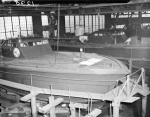 |
136k | c. 1941 Bayonne, NJ Under construction. PT-59 in the foreground, along with PT-58, center and PT-57, in the background |
PT Boats Public Group | |
 |
133k | 11 February 1943 Guadalcanal "A small boat party sent out by the Army Intelligence looks over a sunken Japanese submarine off the west end of Guadalcanal Island. The submarine was sunk during naval operations off the island and was one of largest type to be build by the Japanese." Crew of the PT boat PT-59 inspects the wreckage of the Japanese cruiser submarine IJNS I-1 at Kamimbo on Guadalcanal, February, 1943. I-1 had been sunk during January 1943 by the minesweeper HMNZS Kiwi (T 102) and HMNZS Moa (T 233) U.S. Army photo from "Guadalcanal, the Definitive Account of the Landmark Battle" by Richard B. Frank U.S. Army Signal Corps photo 111-SC-243966 from the National Archives |
Robert Hurst | |
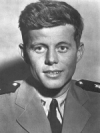 |
120k | In September 1943, Lt. (j.g.) John F. Kennedy went to Tulagi and accepted the command of PT 59 which was scheduled to be converted to a gunboat. In October 1943, Kennedy was promoted to Lieutenant and continued to command the motor torpedo boat when the squadron moved to Vella Lavella until a doctor directed him to leave PT 59 on 18 November. Kennedy left the Solomons on 21 December and returned to the U.S. in early January 1944 Photo courtesy of the John F. Kennedy Library and Museum |
||
 |
198k | c. October 1943 Deck plan and side profile of PT-59 from "Allied Coastal Forces of World War II: Volume II" by John Lambert and Al Ross |
||
 |
48k | After conversion to a "Gunboat" Illustration by Joseph Hinds |
Joseph Hinds | |
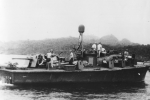 |
105k | c. August/November 1943 Solomons |
Original photo: Jerry Gilmartin, MMC, USN, Ret. Replacement photo: PT Boats Public Group |
|
| C102584 | ||||
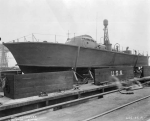 |
80k | 10 March 1945 Naval Shipyard Philadelphia, PA Arriving on board YC-256 |
PT Boats Public Group | |
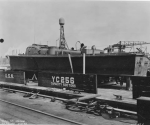 |
83k | |||
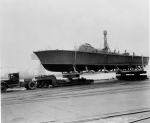 |
241k | 11 March 1945 Naval Shipyard Philadelphia, PA |
||
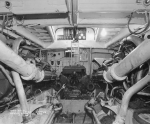 |
127k | 21 May 1945 Naval Shipyard Philadelphia, PA Engineroom looking forward |
||
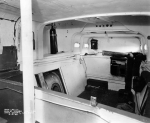 |
87k | 21 May 1945 Naval Shipyard Philadelphia, PA Tank compartment looking forward |
||
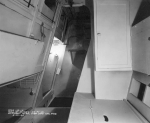 |
72k | 21 May 1945 Naval Shipyard Philadelphia, PA Officer Quarters, Starboard side looking forward |
||
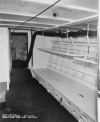 |
78k | 21 May 1945 Naval Shipyard Philadelphia, PA Crew's Quarters, starboard side looking forward |
||
 |
88k | 21 May 1945 Naval Shipyard Philadelphia, PA Tank compartment looking forward |
||
| Sea Queen V | ||||
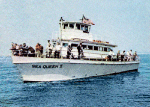 |
133k | Captain Donald Schmahl's Sea Queen V underway out of Manhattan, NY, 1970 Photo courtesy of Bill Fedison from Mel's Place |
Robert Hurst | |
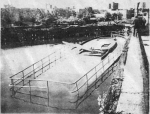 |
80k | c. 1974 Harlem River, NY |
PT Boats Public Group | |
| Boat Captains | ||
| 01 | LT Charles A. Mills, Jr., USNR | April 1942 |
| 02 | LTJG John M. Searles, USNR - Awarded the Navy Cross (1942) | December 1942 |
| 03 | LT David M. Levy, USNR | May 1942 - September 1943 |
| 04 | LTJG John F. Kennedy, USNR - Awarded the Navy and Marine Corps Medal (1943) Elected the 35th President of the United States | September 1943 |
| 05 | ENS J. Atkinson, USNR | January 1944 |
|
|
At about 5:30 on April 9, 1942, PT-59, Lt. Charles A. Mills, Jr., USNR, in command, departed Melville, Rhode Island, for a cruise around Narragansett Bay. The boat skirted Dyer Island, and them changed course southward for some practice torpedo runs. This entailed setting the keys into the firing switches and cranking the launchers so that they pointed a few degrees outboard. All seemed in order, and Mills ducked below for a few minutes to check his charts, to be sure he headed for the proper practice area in Rhode Island Sound, beyond the submarine nets that prevented Hitler’s U-boats from entering Narragansett Bay. He was below for hardly a minute or two when he heard a loud noise, felt the boat shudder, and through a porthole espied a trail of smoke and a spinning propeller vanishing over the rail. An officer-in-training on the bridge had turned the firing key for one of the torpedoes the full 90° necessary to fire a torpedo!
Mills ran the few steps up to the bridge, quickly determined the track of the torpedo, and gave chase. Although concerned, neither Mills nor any of his crew were overly worried. The torpedo was a 21-inch Mark 8. Although the World War I vintage 21-foot long Mark 8 carried 320 pounds of high explosives at 35 knots for as much as ten miles, it had a reputation for unreliability. At least half the time, the torpedo rolled erratically, nose dived, went off course, or even began turning in circles.
Alas, PT-59’s Mark 8 fired did none of these things. In fact, it ran proverbially "hot, straight, and true." Tension began to rise. One sailor called out, "Come on, screw up. Every other one does!" But the torpedo was a good one.
Mills followed the torpedo at some distance, fearful of getting too close, lest it explode prematurely. He also radioed the Harbor Defense Command, to warn them of the danger. Not surprisingly, personnel at that headquarters thought he was making a very bad joke, and it took several tries before Mills convinced them of the danger. Meanwhile the torpedo headed straight for the anchorage off Jamestown, across the bay from Newport Harbor.
With considerable good luck, the torpedo passed off the southeastern end of Prudence Island, just missing a pier loaded with depth charges. Three miles into its run the torpedo struck the USS Capella
(AK-13), a 4,000-ton Navy supply ship that had just anchored off Jamestown on Conanicut Island. The resulting blast sent a column of water into the sky, as cargo and a floatplane were blown into the water. The stricken ship began listing to starboard and settling by the stern.
Reacting quickly, Mills brought his boat up alongside Capella’s port side, while his crew passed a 6-inch line over to the stricken vessel. Working together, the two crews fashioned a spring line. Once the two vessels were tied together, Mills revved his engines to 1,400 rpms. By maneuvering the spring lines, PT-59 managed to shift Capella to shoals, where she grounded.
PT-59 had scored her first “victory.”
Footnote: Afterward
Capella. Although there was considerable damage to the ship’s cargo, only eight men were injured, mostly by sprains and fractures. The ship was refloated a few days later, towed to the Brooklyn Navy Yard, and repaired by mid-May. She continued in service, carrying supplies to installations up and down the East Coast, until the end of the war.
PT-59. Although Lt. Mills’s career did not prosper in the aftermath of the incident, PT-59 went on to render excellent service in the South Pacific. In mid-1943 she was converted into a motor gunboat. In that guise, on October 28, 1943, she helped evacuated wounded men from the Marine 1st Parachute Battalion, then engaged in a raid on Choiseul Island. Her commander at the time was LT John F. Kennedy.
| Back to the Main Photo Index | Back to the Patrol Craft/Gunboat/Submarine Chaser Index | Back to the Motor Torpedo Boat (PT) Photo Index |
| Comments, Suggestions, E-mail Webmaster |
|
This page created by Joseph M. Radigan and maintained by Tom Bateman |